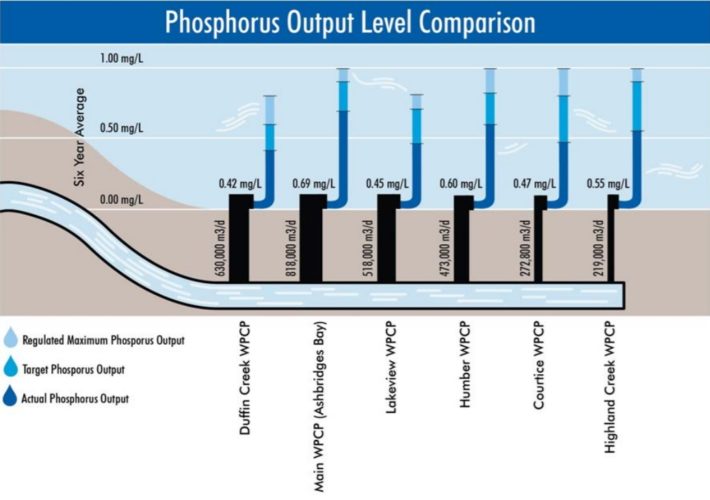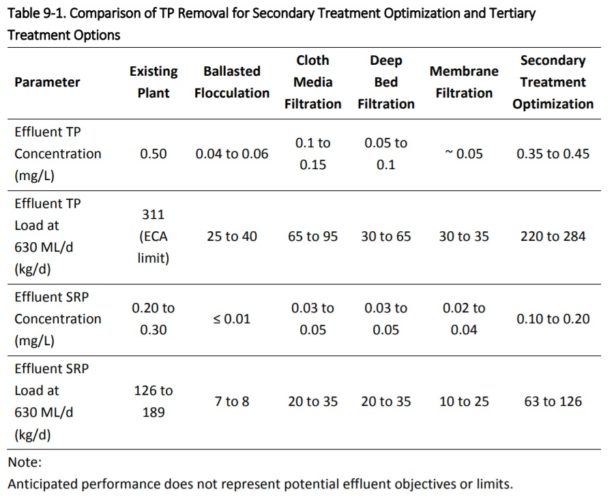Ontario’s York and Durham regional municipalities have completed a study requested by the province’s Ministry of the Environment and Climate Change on strategies to further improve the phosphorus discharge from the Duffin Creek Water Pollution Control Plant (Duffin Creek Plant) entering Lake Ontario.
The Duffin Creek Plant is located on the waters of Lake Ontario in the City of Pickering. It treats wastewater from residents and businesses in most of York Region, plus Ajax and Pickering residents and businesses in Durham Region.
In 2016, York and Durham Regions jointly undertook a Phosphorus Reduction Action Plan study using an international team of leading wastewater treatment experts to research the following:
- The level of phosphorus removal the Duffin Creek Plant can achieve with its current wastewater treatment processes, secondary treatment
- The level of phosphorus removal the Duffin Creek Plant can achieve with additional wastewater treatment stages, tertiary treatment
- Assess the feasibility of reducing effluent phosphorus during the seasonal algae growth window, April through August of each year
The phosphorus reduction study spanned 18 months and included a peer review by an independent expert in phosphorus removal strategies. The Regions have further confirmed the recommended outcome of the study with a series of tests conducted at the plant over the past 10 months.
The Phosphorus Reduction Action Plan reviewed optimization strategies for the existing secondary treatment processes at the plant and a range of potential additional treatment options. The plan recommends proceeding with a strategy to optimize the existing secondary treatment process at the Duffin Creek Plant to achieve lower annual or seasonal average phosphorus concentrations.
A promising outcome from the environmental assessment was that “based on the annual average flow projections for the Duffin Creek Plant, meeting the achievable effluent concentrations will result in a decrease of approximately 40 per cent in effluent total phosphorus loading over the next 25 years.” This will see the Duffin Creek Plant having the lowest phosphorus discharge limits of any plant discharging to the open waters of Lake Ontario. It is lower than those recommended in the Canada – U.S. Great Lakes Water Quality Agreement and lower than those recommended in the 2017 Draft Action Plan for Lake Erie Phosphorus Reduction.

The proposed strategy to optimize the existing plant processes is not expected to impact greenhouse gas emissions, which should remain relatively unchanged, compared to existing plant operations; strategies to minimize greenhouse gas emissions are a key priority for both Regions.
The Phosphorus Reduction Action Plan concluded that optimization of the treatment plant’s processes will provide the most sustainable solution when evaluated by factors such as treatment effectiveness, implementation effort and life-cycle costs, as well as environmental benefits associated with greenhouse gas emissions.

The RMs, along with the provincial and federal governments, have invested more than $850 million over the past 10 years in new technologies, equipment, training, and best practices to ensure the Duffin Creek Plant continues to protect the near shore water and local environment.
Results of the Phosphorus Reduction Action Plan are available to the public. Residents are encouraged to view the report and will have until February 23rd, 2018 to provide any comments or feedback to the Ministry of Environment and Climate Change at:
Ms. Kathleen O’Neill, Director, Environmental Assessment and Permissions Branch
Ministry of the Environment and Climate Change
135 St Clair Ave W, 1st Floor
Toronto, ON M4V 1P5
[email protected]
Hero image credit: NASA Goddard Space Flight Center.












